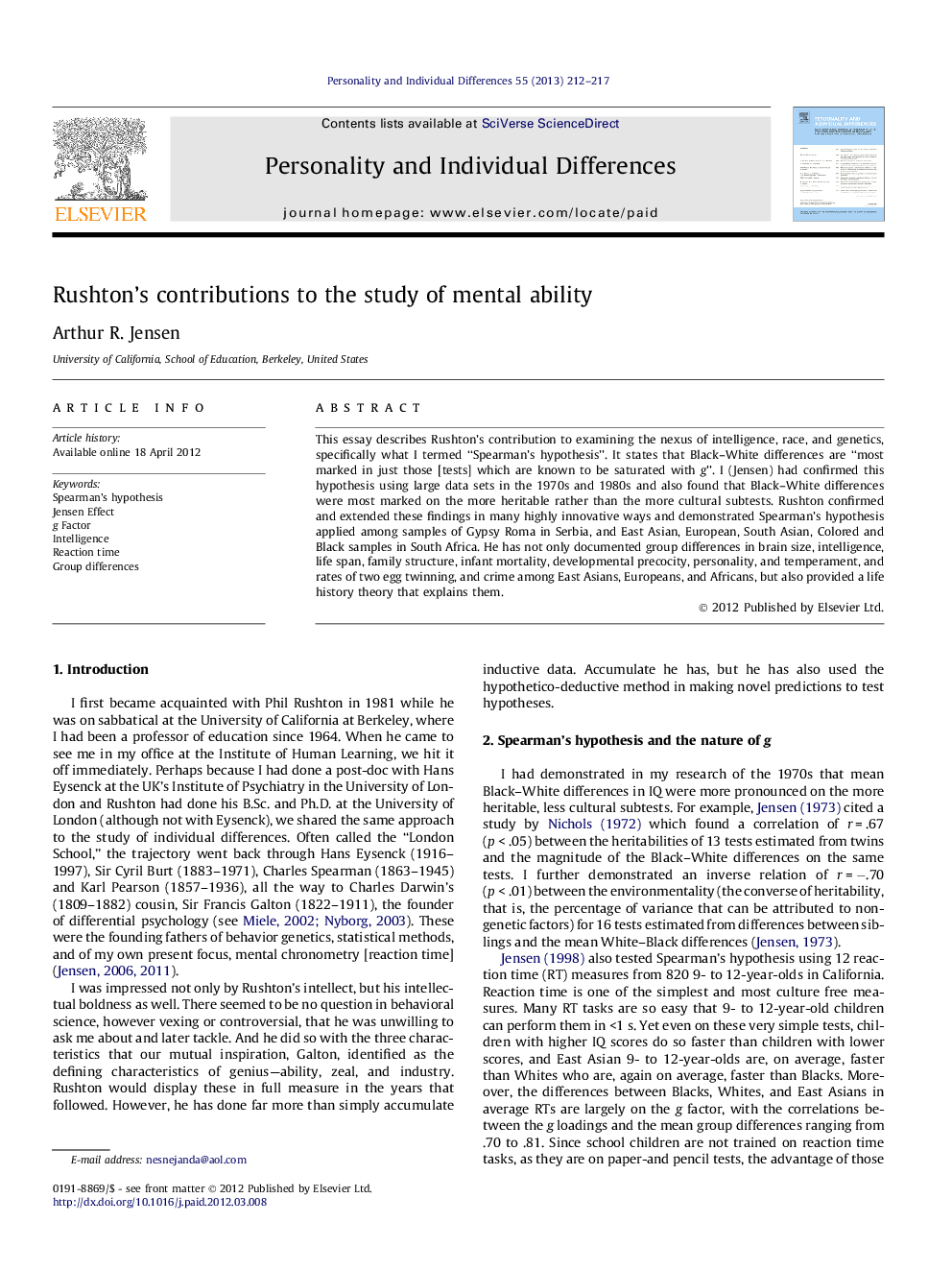| Article ID | Journal | Published Year | Pages | File Type |
|---|---|---|---|---|
| 890799 | Personality and Individual Differences | 2013 | 6 Pages |
This essay describes Rushton’s contribution to examining the nexus of intelligence, race, and genetics, specifically what I termed “Spearman’s hypothesis”. It states that Black–White differences are “most marked in just those [tests] which are known to be saturated with g”. I (Jensen) had confirmed this hypothesis using large data sets in the 1970s and 1980s and also found that Black–White differences were most marked on the more heritable rather than the more cultural subtests. Rushton confirmed and extended these findings in many highly innovative ways and demonstrated Spearman’s hypothesis applied among samples of Gypsy Roma in Serbia, and East Asian, European, South Asian, Colored and Black samples in South Africa. He has not only documented group differences in brain size, intelligence, life span, family structure, infant mortality, developmental precocity, personality, and temperament, and rates of two egg twinning, and crime among East Asians, Europeans, and Africans, but also provided a life history theory that explains them.
► This essay describes Philippe Rushton’s examination of Spearman’s hypothesis. ► It further describes the nature and scope of his life-history theory. ► Black–White differences in intelligence are largest in g-saturated IQ tests. ► Asians, Europeans, and Blacks differ in biological and psychological traits. ► Rushton’s Life History Theory explains the covariant nature of these differences.
